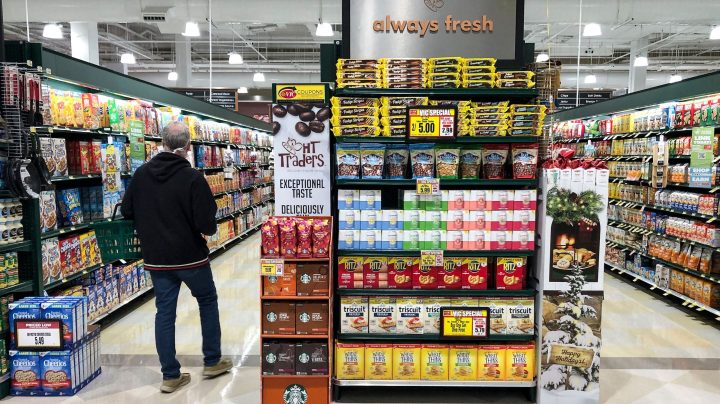
Some kinds of inflation are “stickier” than others

We finally got a little good news on inflation last week. The consumer price index didn’t budge from June to July, with prices on average unchanged over the month. And the year-over-year inflation rate, which was running at 9.1% in June, fell back to 8.5% in July. That’s good news, the kind of sign the Federal Reserve has been looking for that inflation may be starting to decelerate.
What led the way was gasoline — the price has fallen sharply over the last month. Meat in the butcher’s aisle at the grocery store and some clothing at the department store also saw cost decreases.
For consumers, this can all be somewhat confusing. Because while some items are now coming down in price, others — like rent and eating out and going to the doctor — are likely to go up, and stay up, for a while.
According to a detailed analysis of CPI by the Federal Reserve Bank of Atlanta, there are two broad kinds of prices: flexible and sticky.
Flexible prices go up and down a lot, pretty fast. Think gasoline or fresh produce, which can be impacted week to week by the cost and availability of raw materials or weather.
Sticky prices change infrequently. But once they go up, they tend to stay up.
For sticky prices, think home insurance, the phone bill or rent, said Michael Pearce at Capital Economics.
“A lot of these prices tend to be set perhaps once a year,” Pearce said. “This inflation is coming through a lot more slowly, and therefore will persist for longer over the next year or so.”
Another sticky item: processed food and the food you eat at a restaurant.
Most of the cost isn’t in the ingredients, which can vary with the season and the harvest, said Jim Hertel at Inmar Intelligence. It’s nonfood expenses — packaging, advertising, shipping and labor — that are likely to stay expensive for a while.
“Every manufacturer — and this is just as true as somebody who’s in a restaurant operation — as they are able to price up, they really don’t want to give that back,” Hertel said.
Flexible CPI rose 16.3% year over year in July, while sticky CPI rose 5.8%, according to the Atlanta Fed’s latest analysis of CPI data from the Bureau of Labor Statistic. Sticky CPI has risen slowly but steadily since July 2021 (when the year-over-year increase was 2.5%). The year-over-year rate of flexible CPI inflation has climbed from 0.0% in November 2020 to 14.2% in July 2021, peaking at 20% in March before falling to 16.3% in July.
Now, the stickiest parts of CPI include some big-ticket items for consumers, like shelter and health care.
So even though we can see flexible items like fuel getting cheaper every time we drive past a gas station, overall inflation isn’t likely to come down as much or nearly as fast.
There’s a lot happening in the world. Through it all, Marketplace is here for you.
You rely on Marketplace to break down the world’s events and tell you how it affects you in a fact-based, approachable way. We rely on your financial support to keep making that possible.
Your donation today powers the independent journalism that you rely on. For just $5/month, you can help sustain Marketplace so we can keep reporting on the things that matter to you.

















